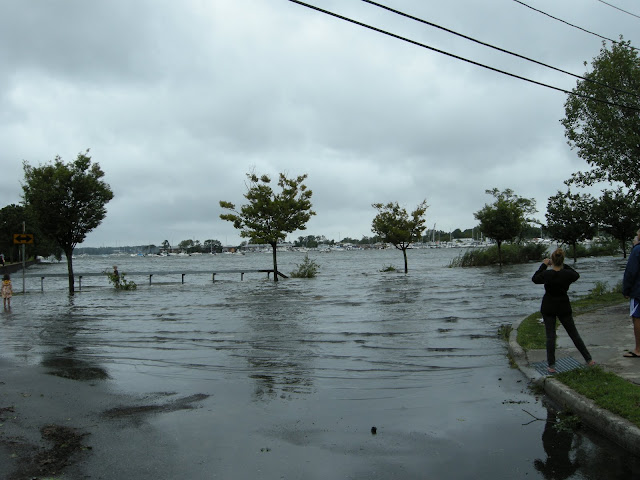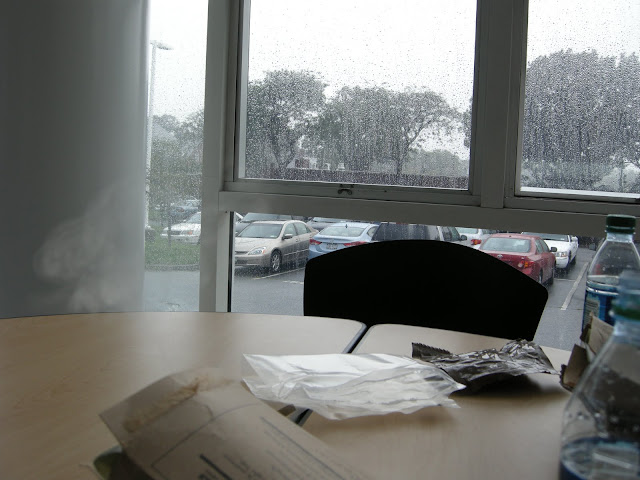We don't like the St. Lucie Inlet, so we stayed inside as we made our way to Stuart. The Stuart mooring field was full when we arrived at the St. Lucie River, so we made our way several miles up the North Fork where we anchored for a couple of days. Our arrival brought with it several days of heavy rain.

The sun tried to make a rare appearance shortly before it's bedtime.

We moved to an anchorage across from the mooring field so that we could keep an eye out for any boat that might vacate a mooring. But mostly we saw more rain and clouds--and a rainbow.

The sun tried to make a rare appearance shortly before it's bedtime.

We moved to an anchorage across from the mooring field so that we could keep an eye out for any boat that might vacate a mooring. But mostly we saw more rain and clouds--and a rainbow.
The seas offshore were still high so boats headed to the Bahamas were staying put. Tuesday we walked to a doctor's appointment, then hauled our laundry to town, and were prepared to head to the Dinner Key mooring field in Coconut Grove, but as we returned with our clean laundry we spotted an empty mooring. We made record time weighing anchor (I even chucked a very muddy Danforth anchor that game up attached to our anchor) and were soon attached to the mooring without having to shove anyone out of our way.
The fuel injectors on the Yanmar were due to be cleaned and have the spray pattern tested, so I pulled them and then Lisa and I made the 5 mile bike ride to the injector shop. They were ready to be picked up after a couple of days, and we were glad we didn't have to buy new nozzles. We were also relieved that the engine started after I reinstalled them.

The injectors before being serviced. Notice the carbon build up on the nozzles.

The injectors before being serviced. Notice the carbon build up on the nozzles.


















































